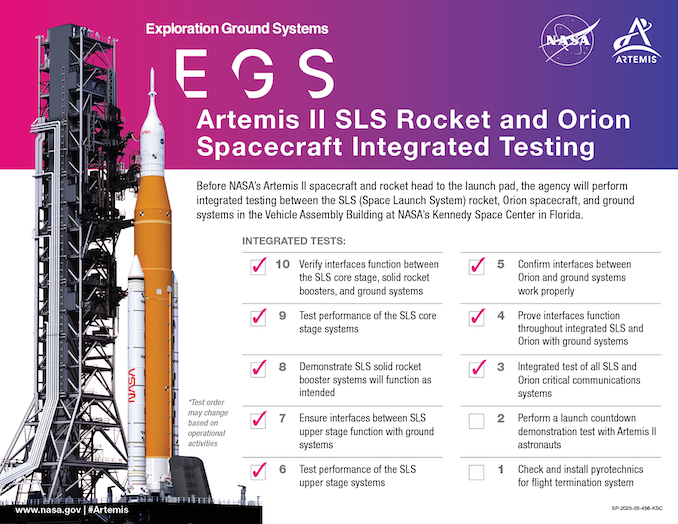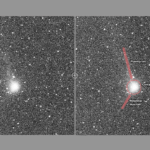Now Reading: SpaceX launches 4 Astranis satellites on Falcon 9 rocket from Cape Canaveral
-
01
SpaceX launches 4 Astranis satellites on Falcon 9 rocket from Cape Canaveral
SpaceX launches 4 Astranis satellites on Falcon 9 rocket from Cape Canaveral


Update 12:45 p.m. (0545 UTC): SpaceX deployed the four satellites.
Following a rare pad abort on Dec. 21, SpaceX launched four satellites to a geosynchronous transfer orbit from Cape Canaveral Space Force Station at midnight on Sunday morning. Prior to the mission moving forward, the company had to swap the first stage booster for another.
Liftoff of the Falcon 9 rocket from Space Launch Complex 40 (SLC-40) happened at 12 a.m. EST (0500 UTC) on Sunday, Dec. 29.
Coming into the launch attempt, the 45th Weather Squadron forecast an 85 percent chance of favorable weather at liftoff. The only concern of note was the presence of cumulus clouds.
“Surface high pressure will continue to push off the Northeast coast today. Although isolated showers are possible near the Spaceport today, conditions should improve overnight during the primary launch window,” launch weather officers wrote. “A cold front will approach from the northwest on Sunday, helping to increase moisture across the region.
“While the main line of showers and thunderstorms is expected to clear the area before the backup launch window opens, scattered showers are expected just ahead of the front which could affect the backup launch window.”
Following the scrubbed launch, SpaceX switched Falcon 9 first stage booster B1077 for B1083. The latter launched for a seventh time after previously supporting Crew-8 for NASA; the commercial astronaut mission, Polaris Dawn; the CRS-31 flight to the International Space Station and three Starlink missions.
SpaceX did not publish any additional information regarding the reason for the scrubbed first launch attempt nor information about the necessity to swap the boosters.
Nearly 8.5 minutes after liftoff, B1083 landed on the SpaceX droneship, ‘A Shortfall of Gravitas.’ This marked the 91st booster landing on ASOG and the 389th booster landing to date.

Small package, big mission
The four satellites onboard the FOTM mission are called MicroGEO satellites since they are each roughly the size of a washing machine. They were built in Astranis’ Pier 70 facilities in San Francisco, CA, and are designed to operate for about eight to ten years.
Two of the satellites, named NuView Alpha and NuView Bravo, are designed to serve aviation and marine customers of Anuvu. The agreement between the two companies was announced back in July 2021 and will service the area in North America and the Caribbean.

“We aim to expand our connectivity network in a way that is scalable and agile for our mobility customers” said Josh Marks, CEO of Anuvu in a 2021 press release. “Astranis and its MicroGEO satellites will offer Anuvu customers freedom from decades-long contracts or outdated legacy systems. Most significantly, they are quick to market, have a mission life of seven to ten years, and can be controlled and updated from the ground, enabling our mobility clients to pivot their business model as new technology is introduced.”
Anuvu ordered the two satellites launching on Friday (originally planned to launch in “early 2023”) in addition to six more that will be added in the future.
Also onboard the FOTM launch is one called ‘AGILA,’ which is the name of national bird of the Philippines. This is the second satellite providing service to that country through a partnership with Orbits Corp.
The first of these two satellites launched, initially planned for launch in the first quarter of 2024, will be followed by a second at a later date.
“Expanding our Philippines program to include an additional Astranis MicroGEO satellite means that Orbits Corp will be able to double the number of people that it connects in the most remote islands of the Philippines,” wrote John Gedmark, Astranis Founder and CEO in a November 2023 blog post. “Millions of people, many of whom live on less than $5,000 per year, will be able to connect to the internet as a direct result.
“Orbits Corp estimates that this two-satellite program will bring up to 10,000 direct and indirect jobs to the Philippines, accelerating economic growth and jumpstarting economic development in many of the smallest and most remote communities in the fast-growing nation.”
GEO mobility
The final satellite launching onboard the FOTM mission is called ‘UtilitySat,’ which will initially be used in service of Astranis customer, ISP Apco Networks in Mexico.
This is the first of two MicroGEO satellites sold to the company, which has the ability to “connect up to five million people,” Gedmark said in a 2023 blog post.

“A number of our employees at Astranis come from Mexico, some from small communities where connectivity is very poor, or non-existent,” he said. “As they told us, and as we found from further research, the need for better connectivity in Mexico is self-evident — more than 30 percent of the country does not have internet access today, and satellite is often the only way to connect the remote and rural communities scattered across the rough, mountainous terrain of Mexico’s 32 states.
“And the nation itself is focused on improving satellite internet availability. Connectivity is a constitutional right in Mexico, and the President has made connectivity a national priority.”
UtilitySat is unique from the other three satellites on this mission because it is designed to adjust its orbital position and support a different mission than its original one at launch.
“UtilitySat is the world’s first multi-mission commercial GEO satellite, capable of conducting fully operational broadband connectivity missions in Ka, Ku, and Q/V bands,” Astranis wrote on its website. “A fully maneuverable satellite with onboard propulsion, UtilitySat will perform multiple such missions throughout its life on orbit — relocating or repointing each year, month, or day to serve urgent customer needs.”
The company said it plans to launch “a fleet of UtilitySat satellites in the coming years.”
Excited to announce UtilitySat, the world’s first multi-mission geostationary satellite, that we’re launching at the end of this year.
This is a first of its kind. And a new product line– providing on-demand connectivity for disaster relief, bridge capacity, and other missions.… pic.twitter.com/8tJS5fDPcE
— John Gedmark (@Gedmark) August 9, 2023
Stay Informed With the Latest & Most Important News
Previous Post
Next Post
-
 012024 in Review: Highlights from NASA in Silicon Valley
012024 in Review: Highlights from NASA in Silicon Valley -
 02Panasonic Leica Summilux DG 15mm f/1.7 ASPH review
02Panasonic Leica Summilux DG 15mm f/1.7 ASPH review -
 03How New NASA, India Earth Satellite NISAR Will See Earth
03How New NASA, India Earth Satellite NISAR Will See Earth -
 04And Thus Begins A New Year For Life On Earth
04And Thus Begins A New Year For Life On Earth -
 05Astronomy Activation Ambassadors: A New Era
05Astronomy Activation Ambassadors: A New Era -
06SpaceX launch surge helps set new global launch record in 2024
-
 07Space Force plans new ‘Futures Command’ amid pressure to speed up modernization
07Space Force plans new ‘Futures Command’ amid pressure to speed up modernization




















